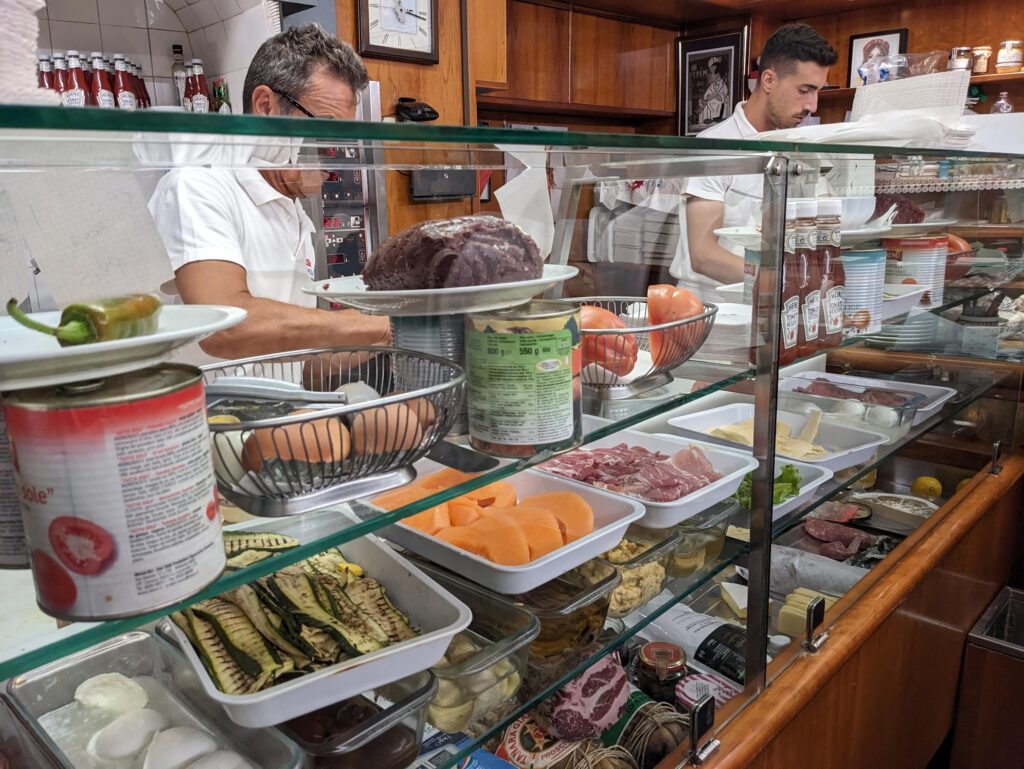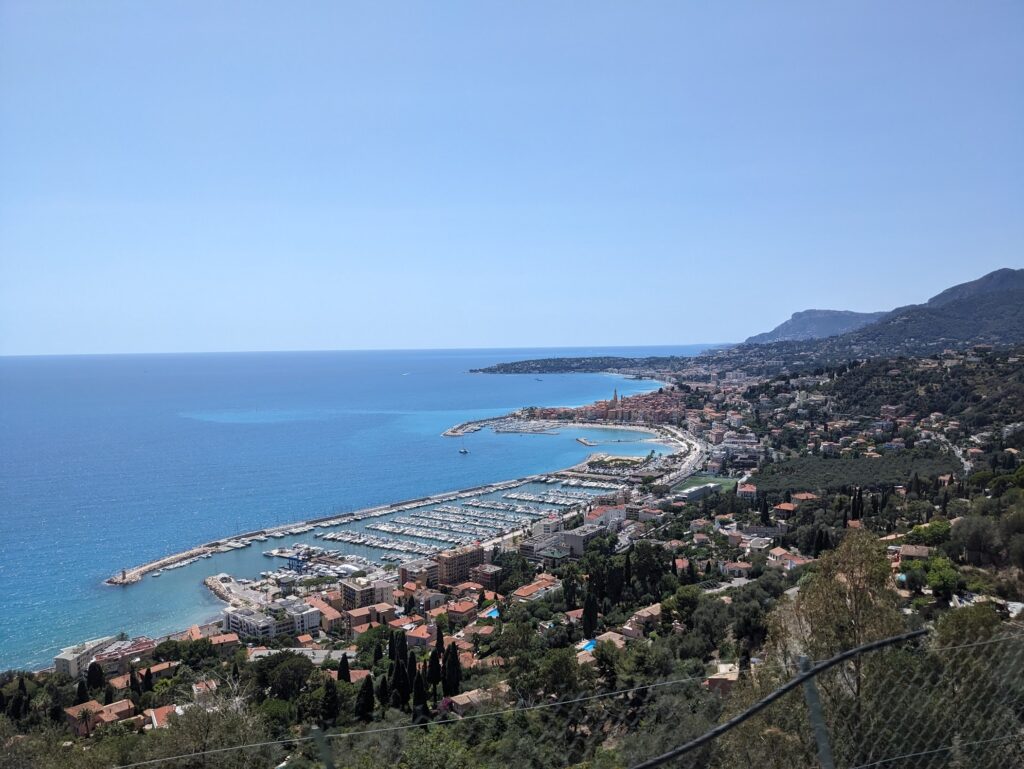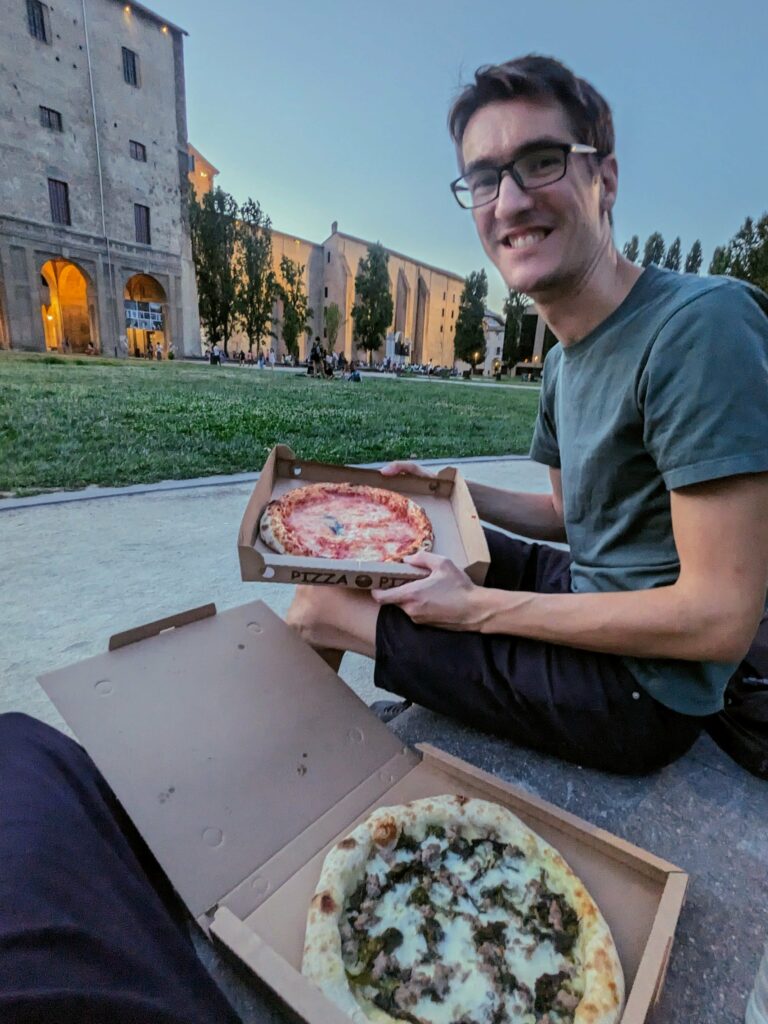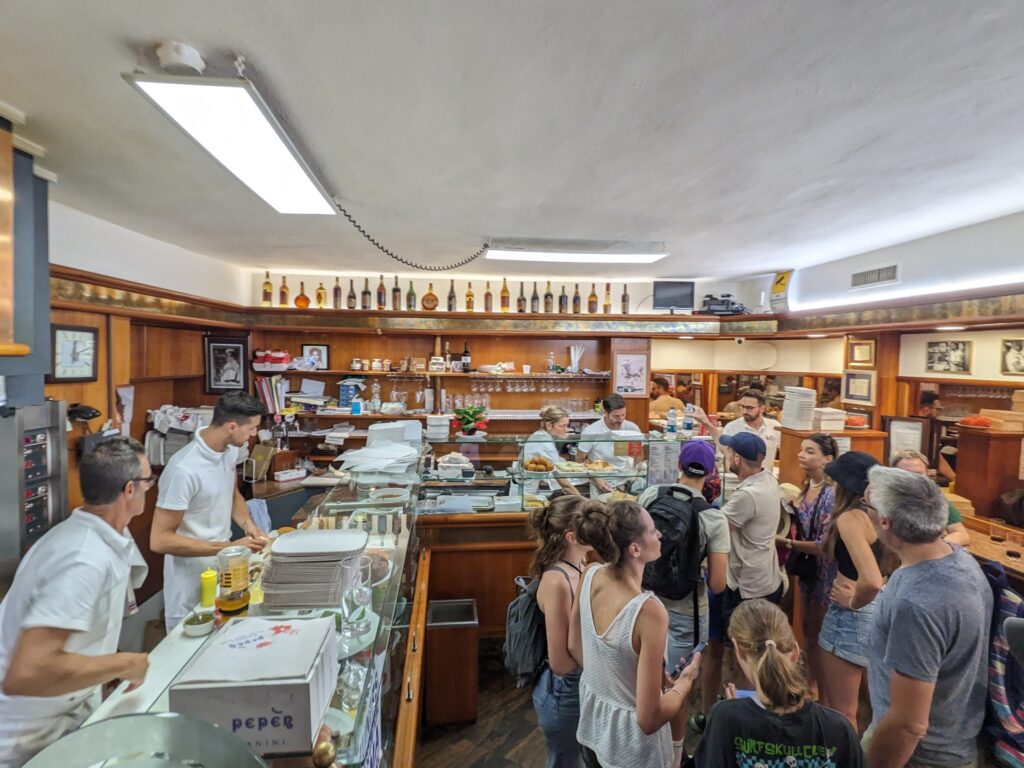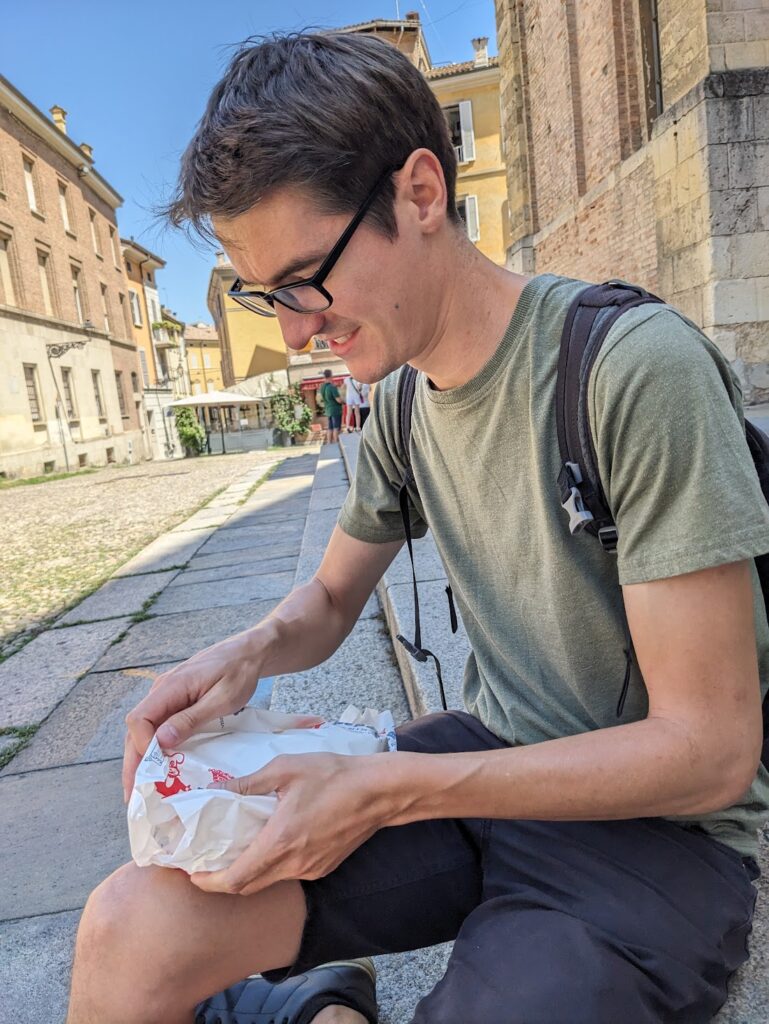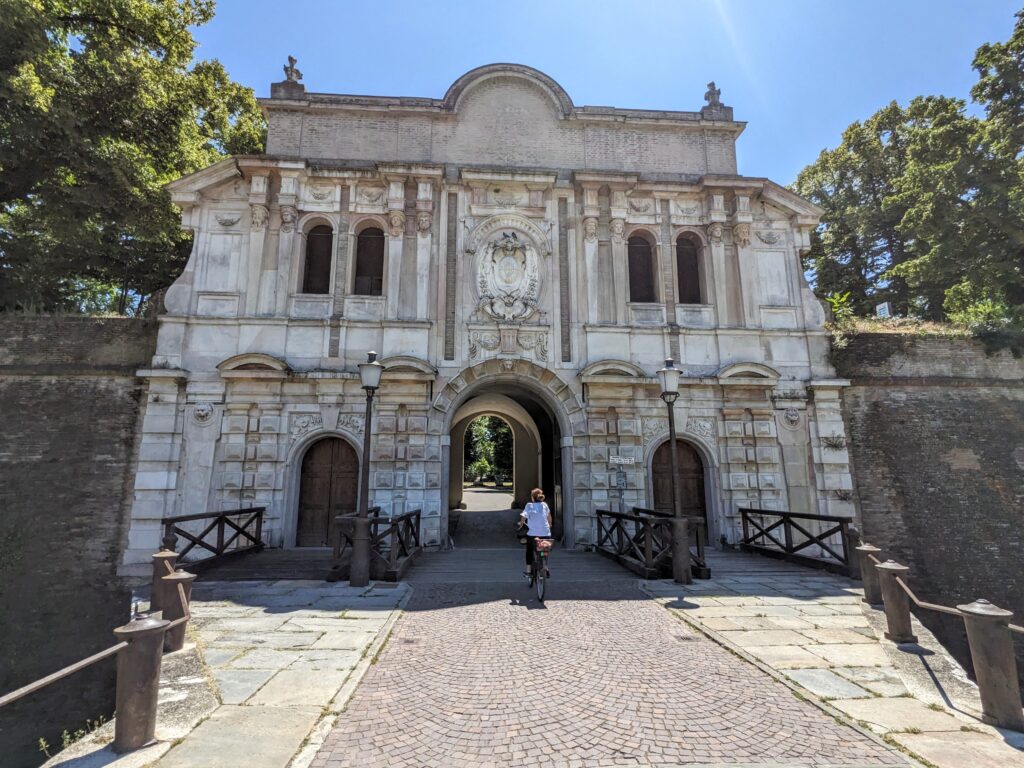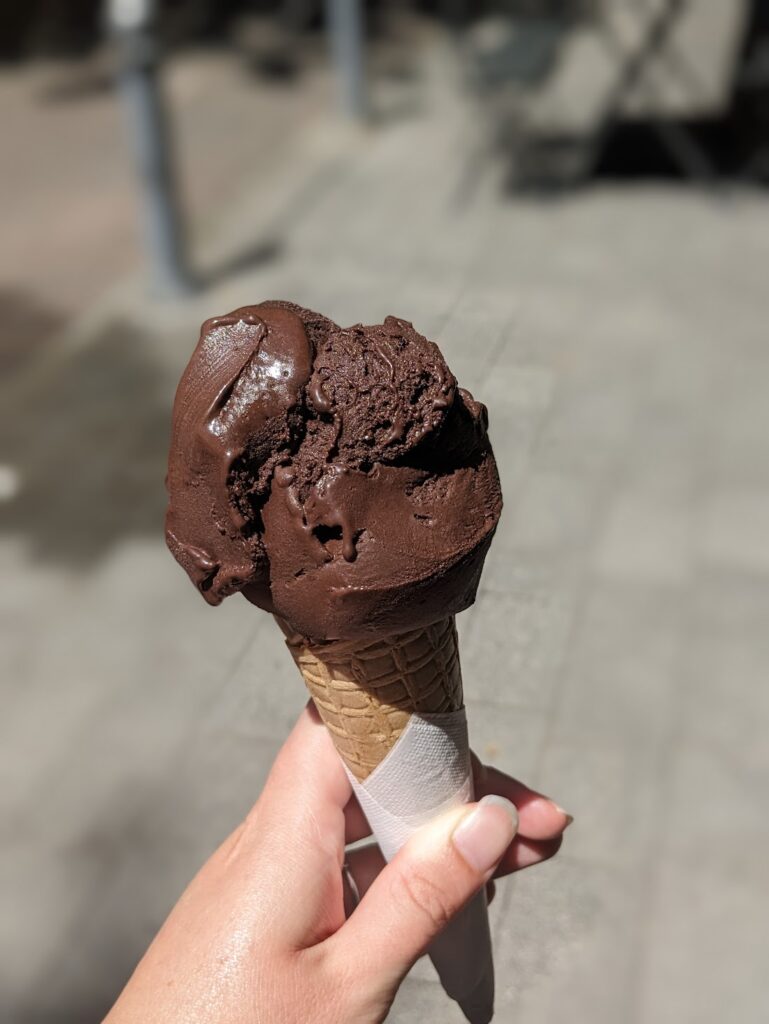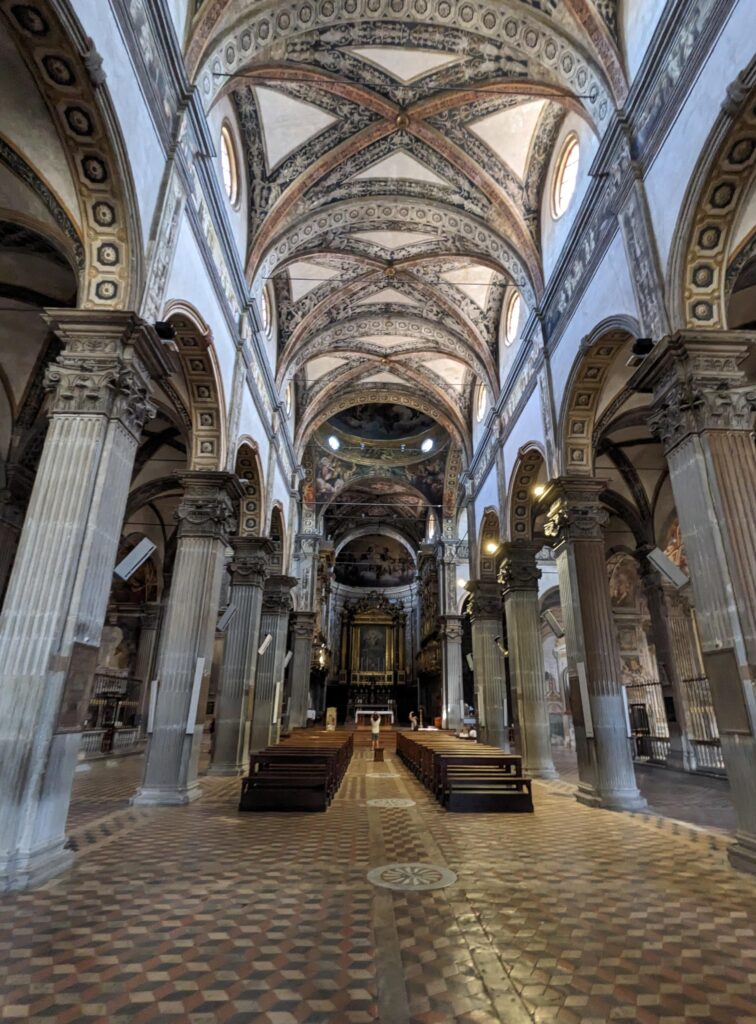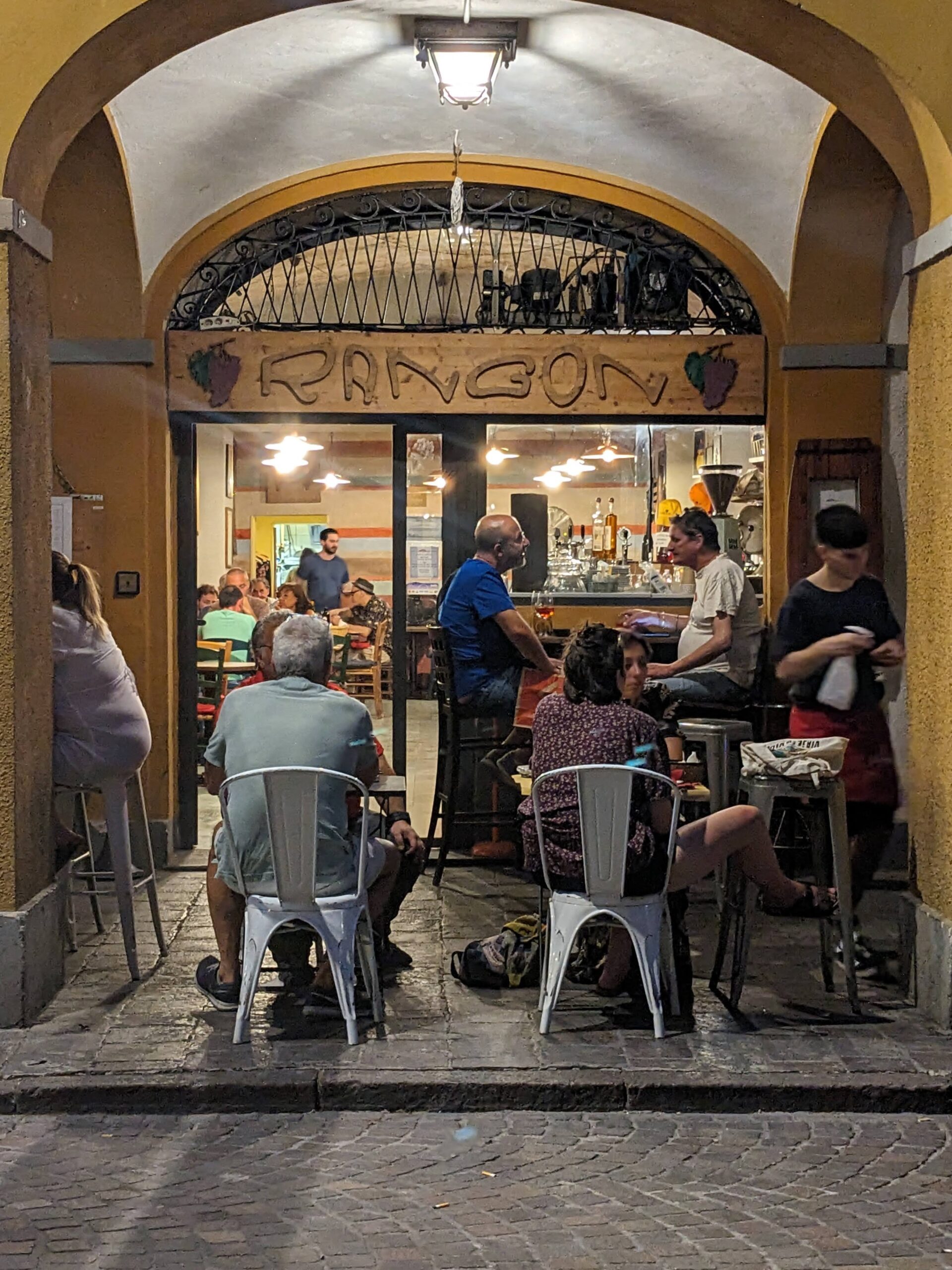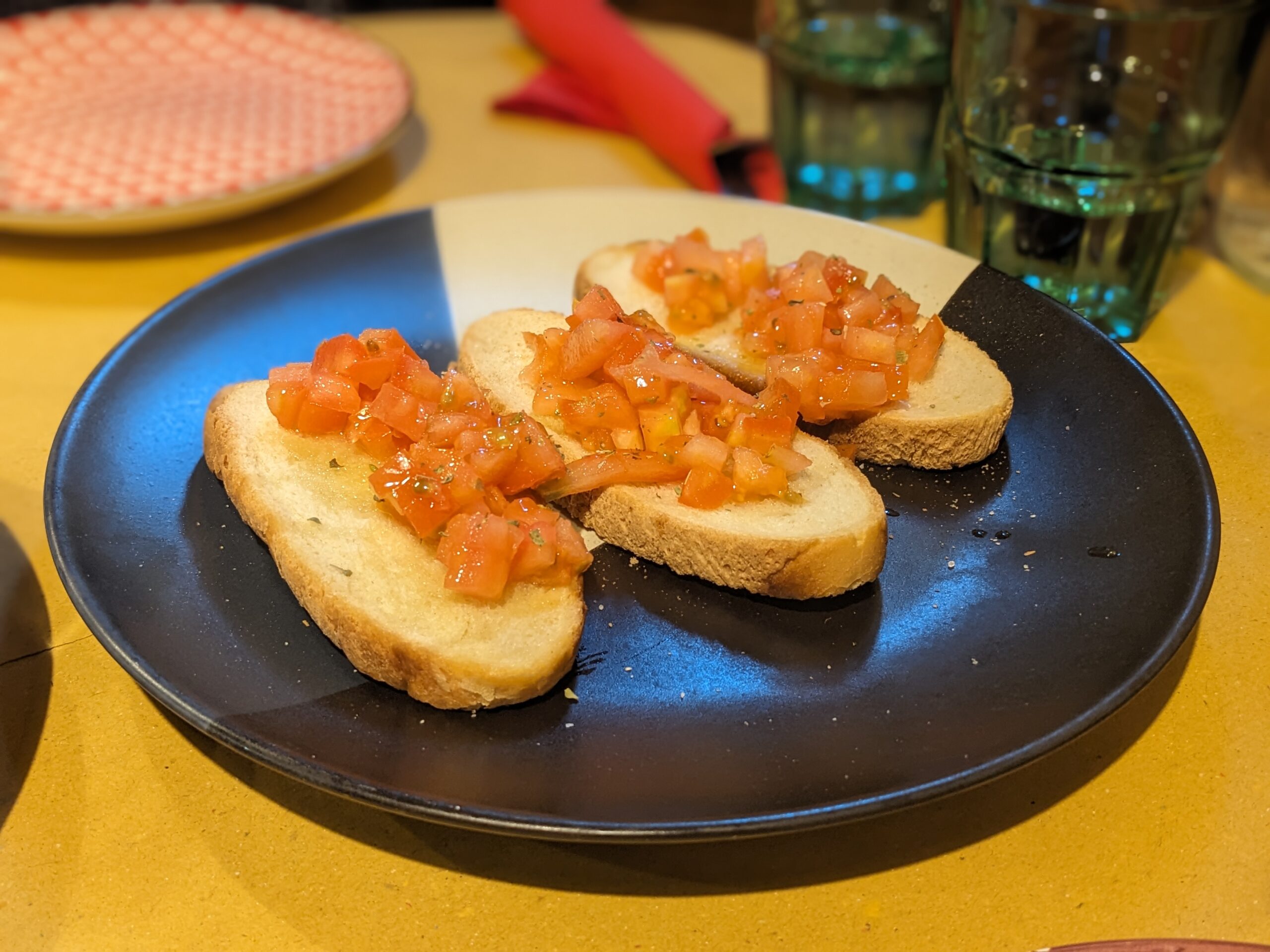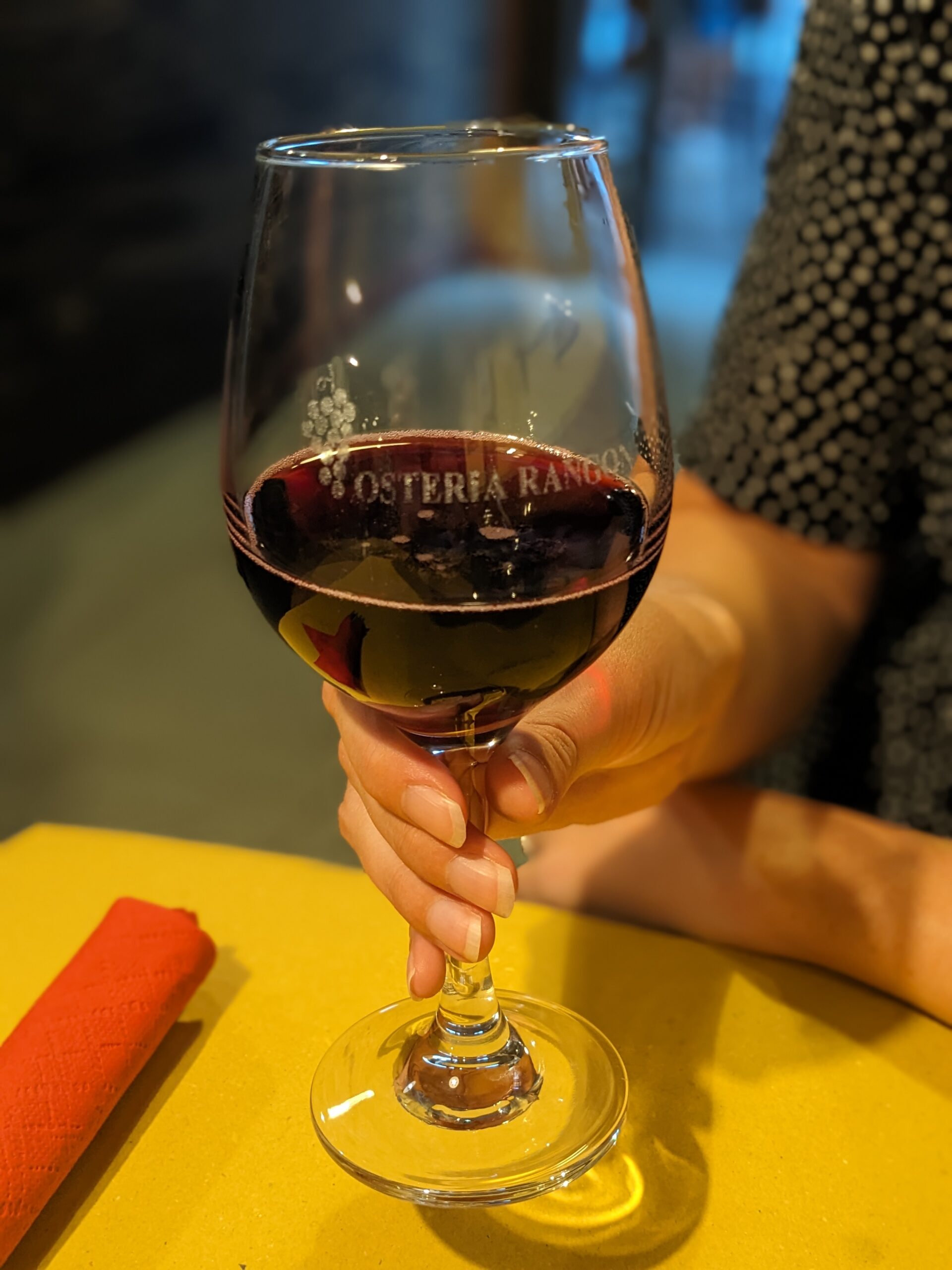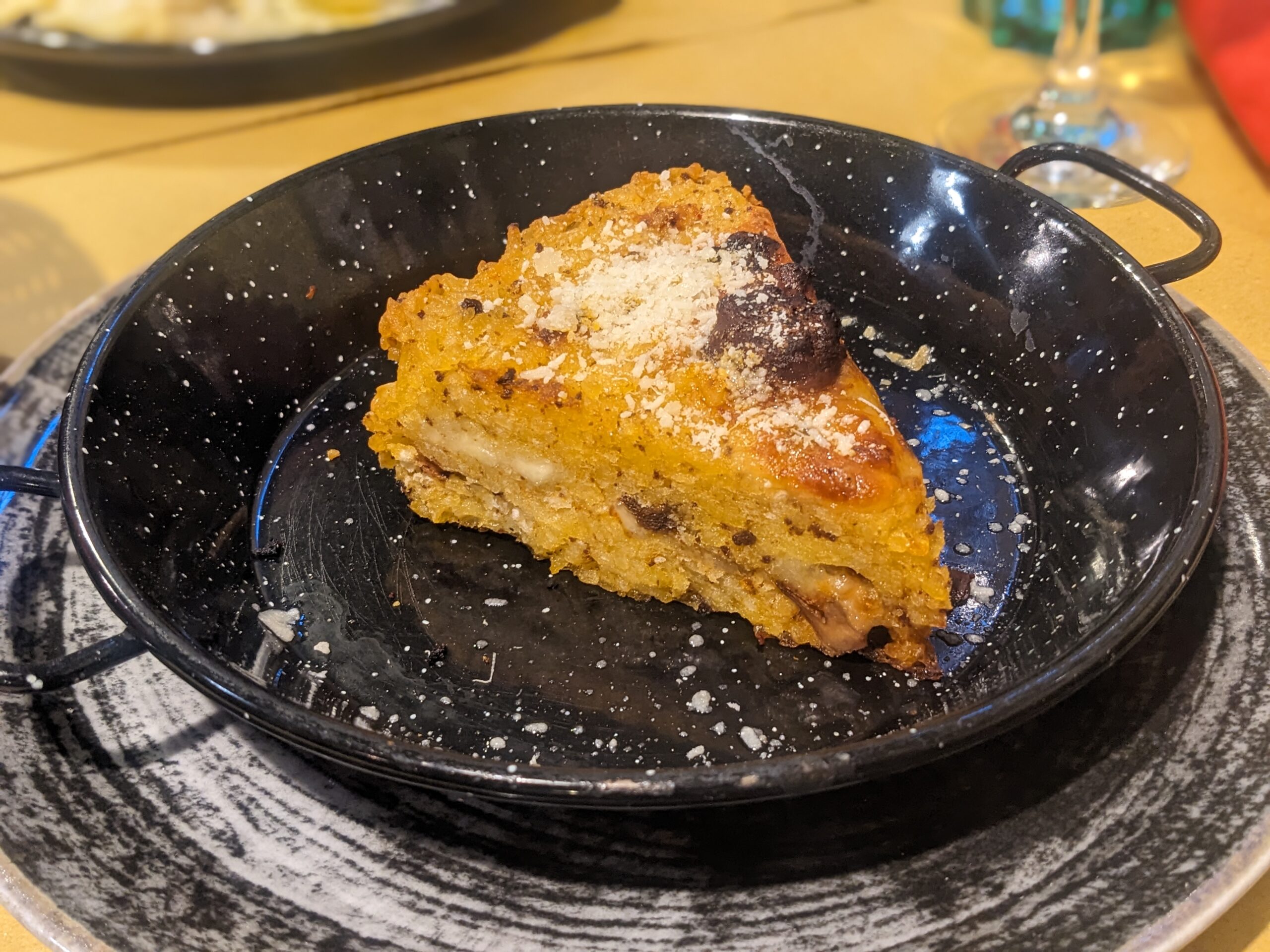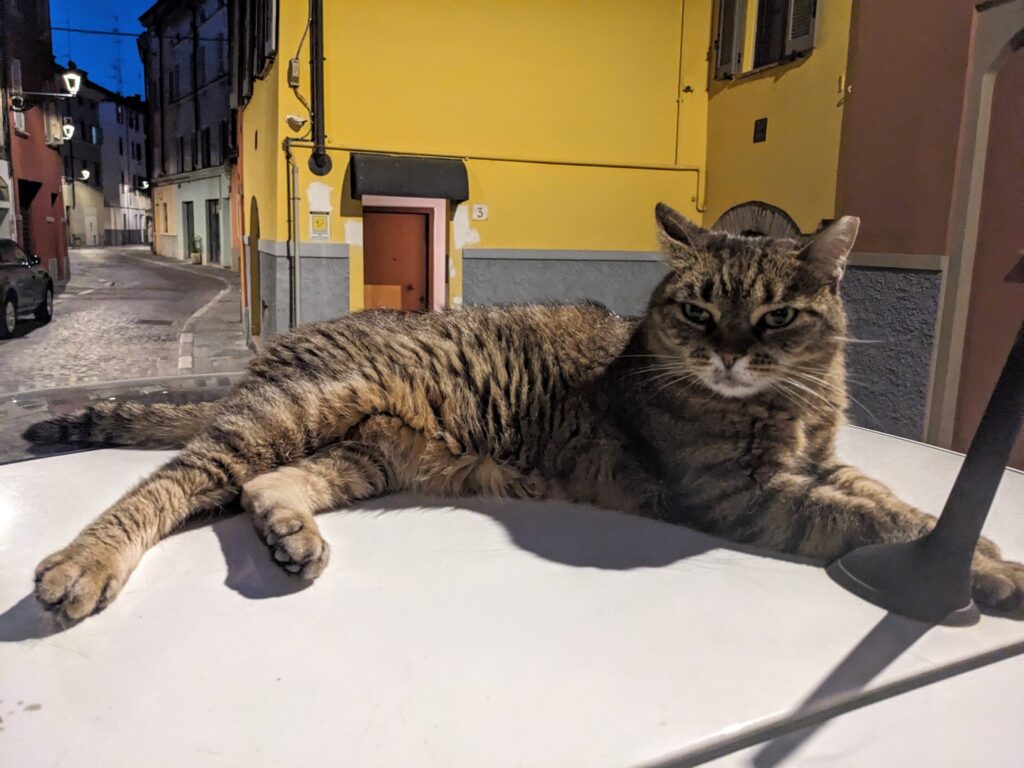Since 1943, the small town of Maranello in northern Italy has been home to Scuderia Ferrari (the racing division of Ferrari, including the Formula 1 team) and Ferrari’s road car factory. I’d planned an ambitious travel day from Parma to Bologna, featuring stops at not one, but two Ferrari museums in Maranello and Modena. With a tight schedule, we didn’t have much contingency time if anything went wrong…
So of course, things started to unravel almost immediately when we got off the train at Modena’s canary-yellow station. We’d planned to store our luggage at an arts centre just next door, but its shutters were half down when we arrived, and when Sara broke in, the only person she could find was a very confused maintenance chap. Sara accosted him anyway and for a moment he looked like he might just help us out, but something told us that this might not be the best idea.
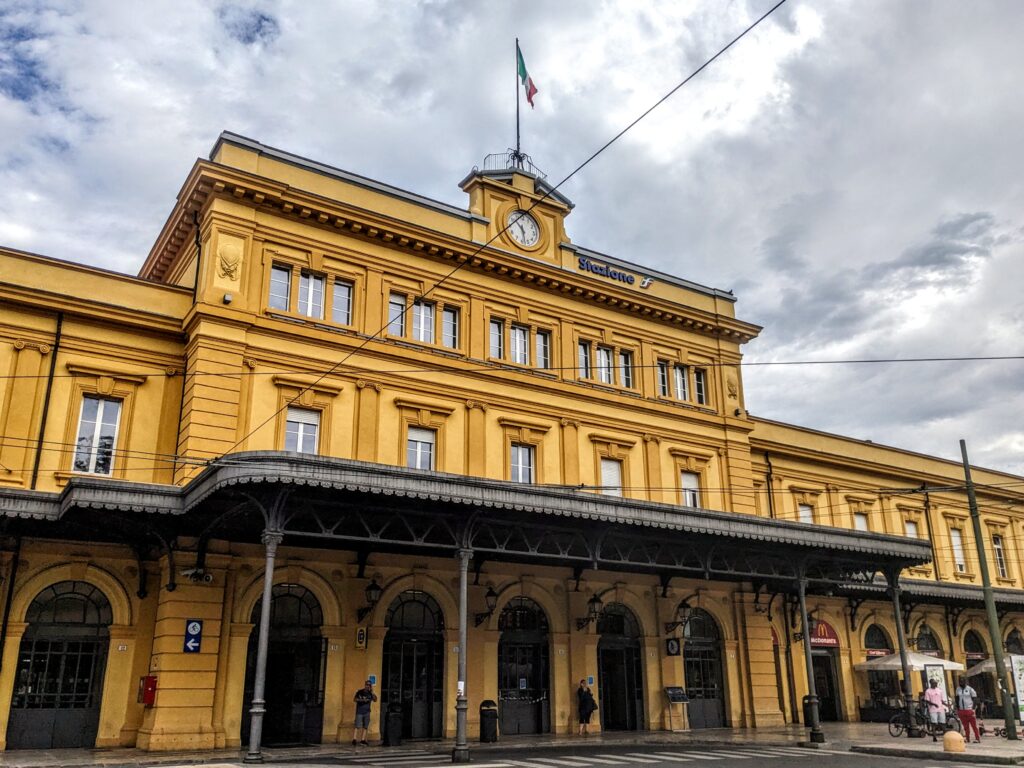
By some miracle, the tourist information booth outside the station was actually open and the friendly chap inside pointed us towards a hostel roughly 10 minutes away by foot which also offered baggage storage. We just about managed to power walk there and back in time for the twice-daily shuttle bus to Maranello. Phew! Phase one complete. 😅


For the Tifosi (Ferrari’s worldwide group of fanatics), Maranello is the Mecca of motorsport. The museum displays a ridiculous number of fast cars, ranging from their early (and incredibly cute) racing cars to modern Formula 1 cars.


As impressive as the display of vehicles was, if I’m honest, I was a little disappointed at the lack of behind-the-scenes stories that I had hoped might accompany the displays. Every info panel just told us how the cars were skilfully hand-made using the finest machinery, producing works of art by following strict scientific processes. It reminded me of a typical brewery tour, where every brewery always claims to combine only the finest ingredients with great care and attention. Sara seemed to lose the plot at one point, and spent a few minutes reading an information panel in Italian before realising that it was about as useful as the English language translation (note: Sara doesn’t speak Italian).
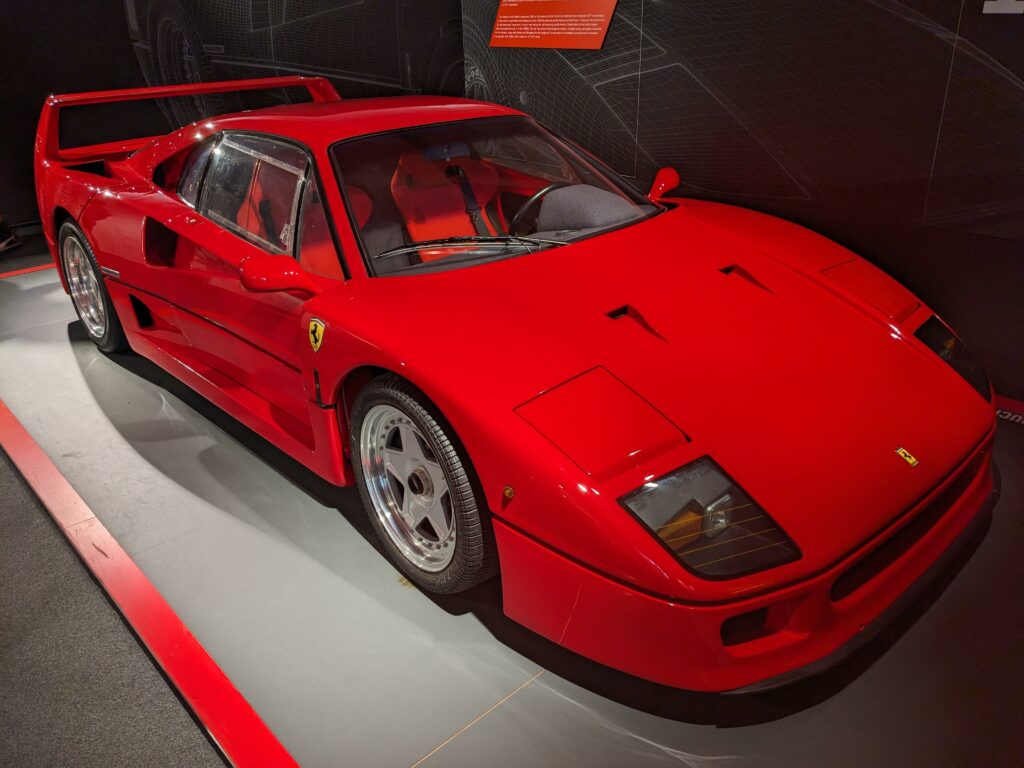
Still, it was really cool to see the Ferrari F1 cars from the Schumacher era that dominated the sport during my childhood, as well as the largest F1 trophy cabinet in existence. After all, no Formula 1 team has won more races, drivers’ or constructors’ championships than Scuderia-Ferrari.


Even though Maranello is less than 100 km from the Imola circuit (which hosts the San Marino / Emilia Romagna F1 Grand Prix), Ferrari have built a private race circuit at Maranello to test top-secret designs for their cars behind closed doors. It was pretty cool to peer over the fence at this legendary place.


After a quick lunch and a shuttle bus back to Modena, it was time to check out the second museum of the day; the Enzo Ferrari museum. In contrast to Modena’s museum, this one focused on the man himself, whose lifetime’s achievements were summarised in a projected film in a matter of minutes. The movie started with his boyhood captivation with the local street races, and went on to describe the founding of the business which grew into the Ferrari brand that we know today, despite being interrupted by no less than two world wars.
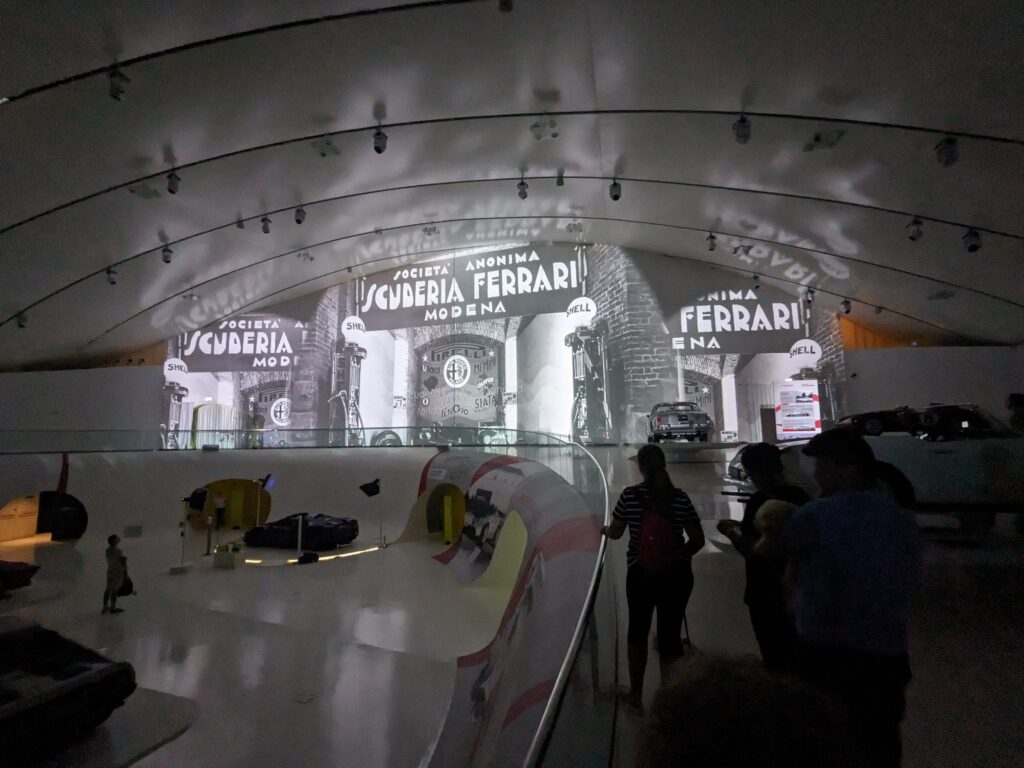
The museum is partly housed in Enzo Ferrari’s family home (where he was born and first started tuning Alfa Romeos for racing), and partly in a vast new hanger which had ample space for many more cars. The building was rather elegantly nestled behind Enzo Ferrari’s first workshop, and modelled after a sports car’s rear engine cover.
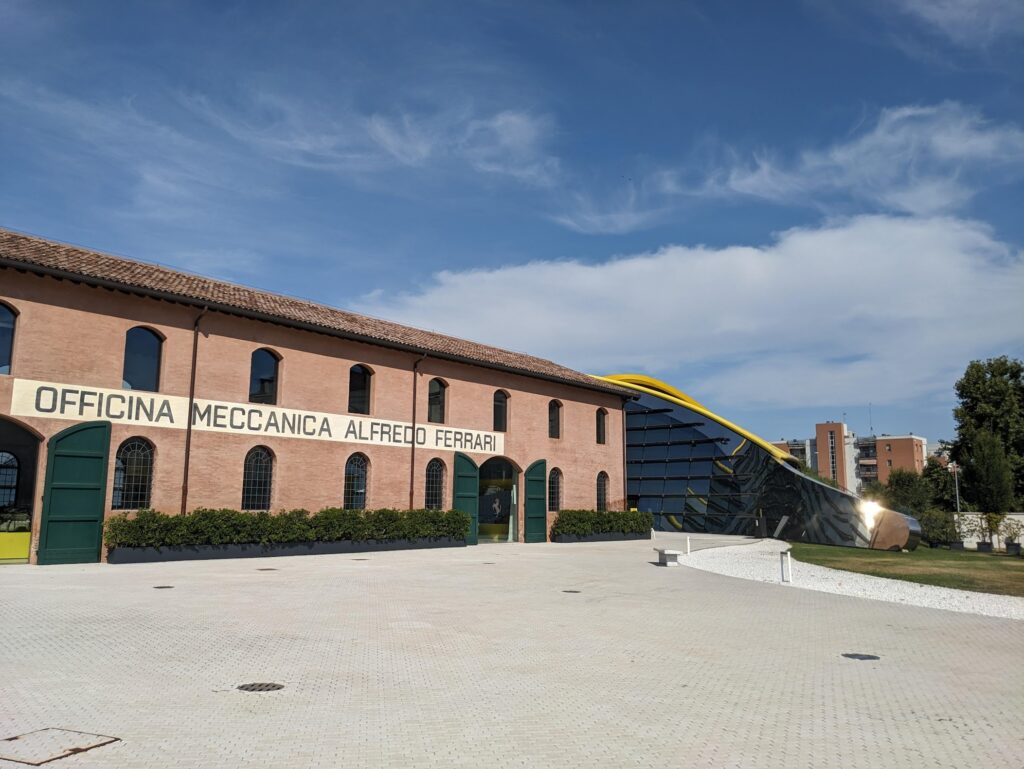
Of the two, the Enzo Ferrari museum was actually our favourite, despite it being less popular than the museum in Maranello. Having said that, we really did enjoy selecting our two favourite cars (mine was the iconic F40, Sara’s was the cute blue 340MM) from the sea of expensive cars in Maranello.
Despite the tight schedule, I was relieved that we pulled off the plan and got to see both museums in a single day. We finally completed our journey with one more train to reach Bologna, home of the world-famous Ragù 🍝
